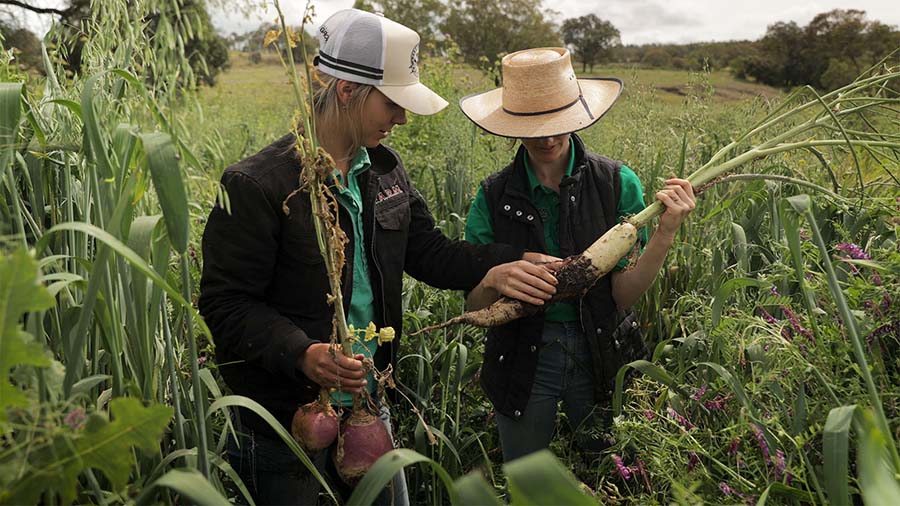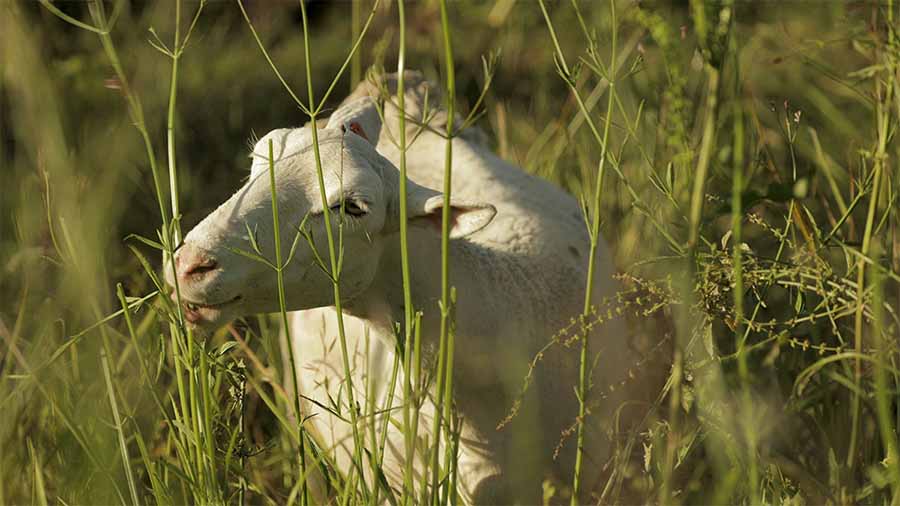While these studies prove that plant diversity in pastures has the potential to enhance animal nutrition, health and welfare, they highlight the importance of considered pasture design. Simply mixing and planting as many forage species as possible will not have good outcomes for stock health or productivity (Distel et al. 2020).
Simply mixing and planting as many forage species as possible will not have good outcomes for stock health or productivity (Distel et al. 2020).
Species identity, abundance and spatial distribution are all important factors to consider. Additionally, environment, climate, soil type and landscape position mean that a one-size-fits-all approach will not be successful. There are some resources available for graziers wanting to incorporate or adjust their multi-species forage mixes, such as regional guides and local land care experts, but more are needed.
Distel et al. (2020) recommend that along with whatever resources are available in your region, this three-step approach should be used:
- Identify plant species and numbers that satisfy the specific goals of the system. (For example, you may be trying to achieve maximum plant biomass, biodiversity or animal production.)
- Examine whether these species and numbers will tolerate the environmental conditions in your region and consider how best to arrange the pasture, for example, in mixes or blocks.
- Finally, develop a long-term plan for monitoring, managing and adapting the pasture.
Responsible management practices are key to the success of diverse pastures. Specifically, rotational grazing and the incorporation of 'rest' have been found to boost pasture and animal health (Distel et al. 2020).
With a considered approach to multi-species pasture planning it is possible to create multi-species mixes that enhance productivity and allow ruminants to efficiently use primary and secondary compounds for comprehensive nutrition and health.
References
Distel RA, Arroquy JI, Lagrange S and Villalba JJ (2020) 'Designing Diverse Agricultural Pastures for Improving Ruminant Production Systems', Frontiers in Sustainable Food Systems, 4, https://www.frontiersin.org/articles/10.3389/fsufs.2020.596869, accessed 15 May 2023.
Provenza FD (1995) 'Postingestive Feedback as an Elementary Determinant of Food Preference and Intake in Ruminants', Journal of Range Management, 48(1):2-17, doi:10.2307/4002498.
Villalba JJ and Provenza FD (2007) 'Self-medication and homeostatic behaviour in herbivores: learning about the benefits of nature's pharmacy', Animal, 1(9):1360-1370, doi:10.1017/S1751731107000134.
 Pasture design is a key to success to livestock vitality.
Pasture design is a key to success to livestock vitality.




